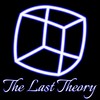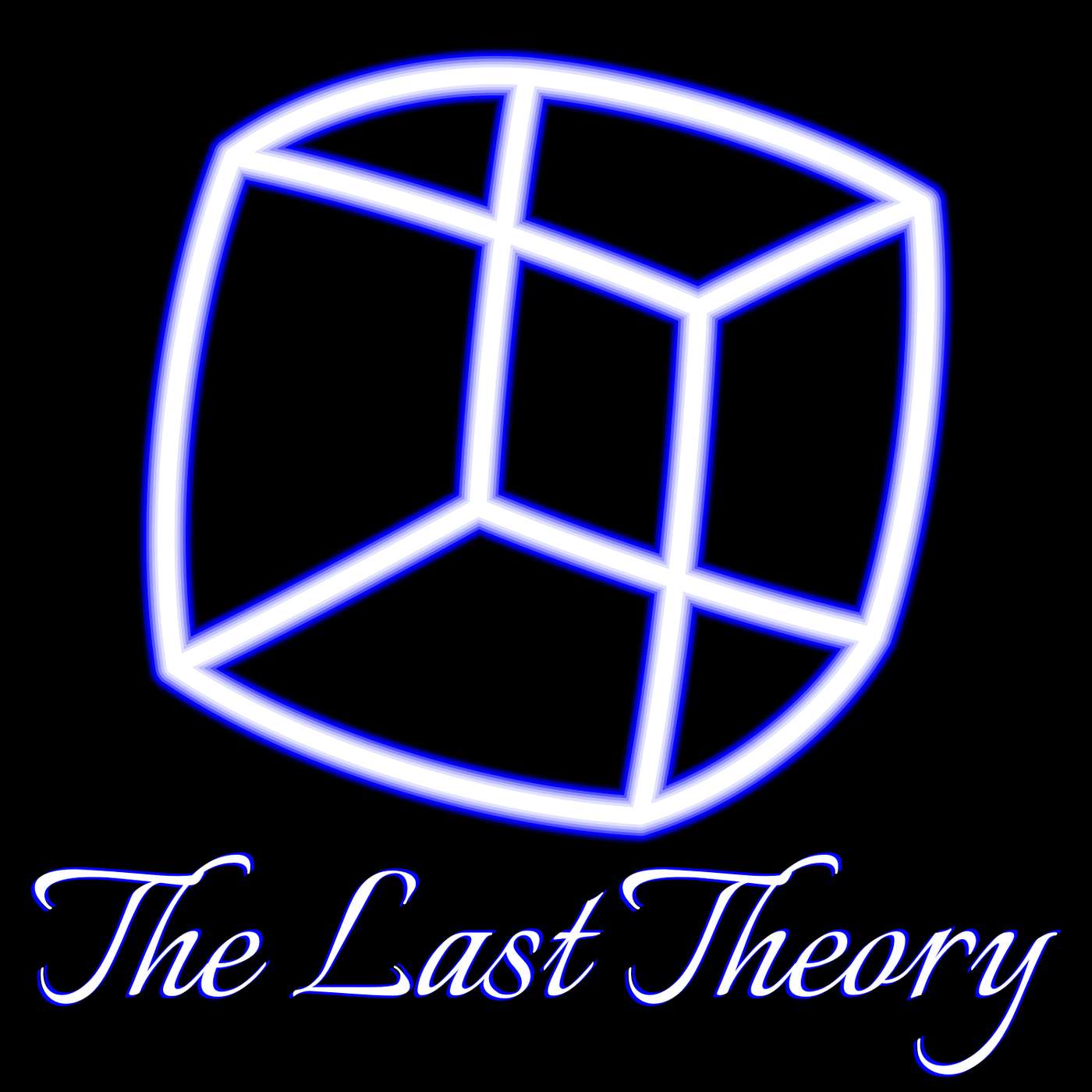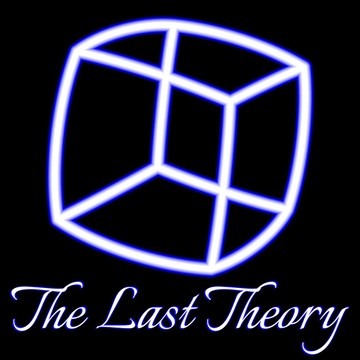

The Last Theory
Mark Jeffery
The Last Theory is an easy-to-follow exploration of what might be the last theory of physics. In 2020, Stephen Wolfram launched the Wolfram Physics Project to find the elusive fundamental theory that explains everything. On The Last Theory podcast, I investigate the implications of Wolfram's ideas and dig into the details of how his universe works. Join me for fresh insights into Wolfram Physics every other week.
Episodes
Mentioned books

Mar 9, 2024 • 14min
Beyond physics: applying the Wolfram model in biology, chemistry, mathematics with Jonathan Gorard
Exploring the Wolfram model beyond physics with Jonathan Gorard, discussing compositionality, hypergraphs, general relativity, quantum mechanics, and the application of category theory in various fields.

Feb 11, 2024 • 10min
Who is Stephen Wolfram?
You know who Stephen Wolfram is, right?Whether you love him or, you know, don’t love him, there’s no denying that Stephen Wolfram has founded a host of fascinating projects... most of them named Wolfram-something-or-other.What are all these Wolfram-branded projects?Who is Stephen Wolfram?—Some of the things Stephen Wolfram created:1987 Wolfram Research1988 Mathematica2009 Wolfram Alpha2014 Wolfram Language2020 Wolfram Physicsnot to mention:Wolfram CloudWolfram OneWolfram NotebooksWolfram PlayerWolfram ScriptWolfram EngineWolfram FoundationMore about Stephen Wolfram:Stephen Wolfram’s web siteTimelineStephen Wolfram’s education:University of OxfordCalifornia Institute of TechnologySome of Stephen Wolfram’s special subjects:particle physicscellular automataSome of Stephen Wolfram’s books:A New Kind Of ScienceA project to find the Fundamental Theory of PhysicsOther people involved in the Wolfram Physics Project:Jonathan GorardMax PiskunovReference:Wolfram Research now has over 800 employeesImage:Animation. 1200 iterations of the ‘Rule 110’ Automata by Mr. Heretic licenced under CC BY-SA 3.0Some of my own projects:things made thinkable – visualization of nuclides – tap the binding energy button bottom right to show the binding energy per nucleonOpen Web Mind – subscribe to the newsletter or YouTube channel for more on shared human intelligence—The Last Theory is hosted by Mark Jeffery, founder of Open Web MindI release The Last Theory as a video too! Watch here.The full article is here.Kootenay Village Ventures Inc.

Jan 19, 2024 • 15min
Where's the evidence for Wolfram Physics? with Jonathan Gorard
I asked Jonathan Gorard the question I’m asked the most: can the Wolfram model make testable predictions about reality, predictions that differ from those of general relativity and quantum mechanics, predictions that might prove that Wolfram Physics is right?Jonathan showed how the Wolfram model might shed light on some of the most mysterious phenomena of our universe, from black hole inspirals to quantum entanglement.He focused on four areas where the class of theories encompassed by the Wolfram model might predict observable phenomena:1. Cosmological consequences of global dimension change2. Astrophysical consequences of local dimension change3. Discretization effects during extreme astrophysical events4. Quantum mechanical effects such as maximum entanglement speedThese dozen minutes of my conversation with Jonathan were dense with insights into Wolfram Physics, a true pleasure to revisit!—Jonathan GorardJonathan Gorard at The Wolfram Physics ProjectJonathan Gorard at Cardiff UniversityJonathan Gorard on TwitterThe Centre for Applied CompositionalityThe Wolfram Physics ProjectConcepts mentioned by JonathanCategory errorCausally connectedCosmological inflationLambda-CDM cosmologyHorizon problemFlatness problemMagnetic monopole problemCosmic microwave backgroundCosmic neutrino backgroundInflaton scalar fieldhttps://lasttheory.com/channel/055-where-is-the-evidence-for-wolfram-physicsQuintessent scalar fieldDecoupling timeRecombination timeLensing effectsLIGO – Laser Interferometer Gravitational-Wave ObservatoryBlack hole inspiralCausal edge densityWeyl curvatureQuadrupole momentEntanglement structureBranchial graphQuantum information theoryMargolis Leviton boundPeople mentioned by Jonathan:Alan GuthAndrei LindeStephen WolframXerxes ArsiwallaAbdus Salam—The Last Theory is hosted by Mark Jeffery, founder of Open Web MindI release The Last Theory as a video too! Watch here.Kootenay Village Ventures Inc.

Jan 11, 2024 • 1min
The knowledge hypergraph
The Open Web Mind is a protocol for shared human intelligence, based on the knowledge hypergraph.Take a look at this quick introduction for subscribers to The Last Theory, then jump to the 2-minute trailer on the new channel.And if you haven’t done so already, make sure to subscribe to the new Open Web Mind channel, podcast and newsletter.If you’re interested in Wolfram Physics, I think you’ll find Open Web Mind fascinating!—The Last Theory is hosted by Mark Jeffery founder of Open Web MindI release The Last Theory as a video too! Watch here.Kootenay Village Ventures Inc.

Dec 17, 2023 • 6min
Are electrons too big to simulate? with Jonathan Gorard
How big are electrons compared to the hypergraph?Is one electron formed of 10 nodes, or 10100 nodes?And if it’s 10100 nodes, might it prove impossible to simulate an electron on any computer we can possibly imagine?When I asked Jonathan Gorard this question, he took us on a tour of the scales of the universe, from the Planck scale to the Hubble scale.He revealed how the Wolfram Physics Project’s early estimate of the scale of the hypergraph was based on a tower of rickety assumptions.And he explained how the Wolfram model might connect with particle physics regardless of the disparities of scale.—Jonathan GorardJonathan Gorard at The Wolfram Physics ProjectJonathan Gorard at Cardiff UniversityJonathan Gorard on TwitterThe Centre for Applied CompositionalityThe Wolfram Physics ProjectConcepts mentioned by JonathanPlanck scaleHubble scaleGeneral relativityFluid mechanicsQuantum mechanicsQuantum Field TheoryScattering amplitudes—The Last Theory is hosted by Mark Jeffery, founder of the Open Web MindI release The Last Theory as a video too! Watch here.Kootenay Village Ventures Inc.

Dec 7, 2023 • 16min
How to measure the curvature of space
What if you’re inside a universe, and you want to measure the curvature of space?It’s important because getting a measure of the curvature of the hypergraph takes us one step further in Jonathan Gorard’s derivation of General Relativity from Wolfram Physics.Einstein’s equations relate the curvature of space to the presence of matter. So if we’re going to prove that Einstein’s equations follow from the Wolfram model, we’re going to need that measure of the curvature of the hypergraph.Once again, a two-dimensional crab comes to the rescue, given us a way to measure the curvature of a universe from inside that universe.—See Stephen Wolfram’s announcement, under Curvature in Space & Einstein’s Equations, also included as the introduction to his book A project to find the Fundamental Theory of Physics, page 20, for more on measuring the curvature of spaceConcepts:Cosine power series expansionPolynomial regression analysisRicci scalar curvature—The Last Theory is hosted by Mark Jeffery, founder of the Open Web MindI release The Last Theory as a video too! Watch here.The full article is here.Kootenay Village Ventures Inc.

Nov 16, 2023 • 8min
A toy model of particles with Jonathan Gorard
In this excerpt from my conversation with Jonathan Gorard, he proposes that particles in Wolfram Physics might be persistent topological obstructions in the hypergraph.He starts with a toy model in which elementary particles are non-planar tangles moving and interacting in an otherwise planar hypergraph.But he doesn’t stop there.He explains that there’s an infinite variety of hypergraphs that give rise to such persistent topological obstructions.These localized tangles behave in ways that look a lot like particle physics.—Jonathan GorardJonathan Gorard at The Wolfram Physics ProjectJonathan Gorard at Cardiff UniversityJonathan Gorard on TwitterThe Centre for Applied CompositionalityThe Wolfram Physics ProjectConcepts mentioned by JonathanUtility graphKuratowski’s theoremWagner’s theoremComplete graphs – including K_5Complete bipartite graphs – including K_3,3Robertson-Seymour TheoremGraph minorForbidden minor characterizationImage:Feynman diagram Feynmann Diagram Gluon Radiation by Joel Holdsworth, public domain—The Last Theory is hosted by Mark Jeffery, founder of the Open Web MindI release The Last Theory as a video too! Watch here.Kootenay Village Ventures Inc.

Nov 2, 2023 • 12min
How to tell if space is curved
What if you’re inside a universe, and you want to know whether space is curved?The reason I’m asking is that according to Einstein’s general theory of relativity, our universe is curved, by the presence of matter.If Wolfram Physics is to be a true model of our universe, then the space represented by the hypergraph must also be curved by the presence of matter.Which means that determining whether space is curved is crucial to Jonathan Gorard’s derivation of Einstein’s equations from the Wolfram model.Fortunately, there’s a way to find out that’s so simple that even a crab or a space frog could do it.Here’s how to tell if your universe curved.—Dimensionality:How to measure the dimensionality of the universeAre Wolfram’s graphs three‑dimensional?What are dimensions in Wolfram’s universe?Space-time:Space‑time is deadEuclidean geometry:Euclidparallel lines never meet—The Last Theory is hosted by Mark Jeffery, founder of the Open Web MindI release The Last Theory as a video too! Watch here.The full article is here.Kootenay Village Ventures Inc.

Oct 19, 2023 • 6min
How special is general relativity? with Jonathan Gorard
I asked Jonathan Gorard what it felt like when he realized that general relativity can be derived from the hypergraph.His answer took us in an unexpected direction.If the Wolfram model is to be an accurate model of our universe, then it must give us the Einstein equations.But what if any old model with any old rules can give us the Einstein equations?What if general relativity isn’t so special?This is one of the shorter excerpts from my conversation with Jonathan, but it’s a fascinating one.It takes us to one of the most powerful aspects of the Wolfram model: its ability to answer questions about why our universe is the way it is, questions that were once in the realm of philosophy but may now be within the scope of physics.—Jonathan GorardJonathan Gorard at The Wolfram Physics ProjectJonathan Gorard at Cardiff UniversityJonathan Gorard on TwitterThe Centre for Applied CompositionalityThe Wolfram Physics ProjectConcepts mentioned by JonathanEinstein field equationsRiemannian manifoldEinstein–Hilbert actionCausal invarianceErgodicity—The Last Theory is hosted by Mark Jeffery, founder of the Open Web MindI release The Last Theory as a video too! Watch here.Kootenay Village Ventures Inc.

Oct 7, 2023 • 13min
Why scientific theories need not make predictions
In my exploration of Wolfram Physics, I’ve come across one objection more than any other.Over and over again, people have told me that the Wolfram model must be rejected because it makes no predictions.I could respond by saying that Wolfram Physics does make predictions. It predicts Einstein’s equations. It predicts Schrödinger’s equation.But it’s true that it doesn’t make any predictions that differ from those of general relativity and quantum mechanics. At least, not yet.So here’s my more robust response to the objection: all scientific theories make no predictions when they’re first formulated.If we dismiss any new theory solely because it doesn’t make any predictions, then we’d dismiss all new theories.It’s time for academics to learn the lessons of the history of science, and open their minds to bold, new ideas, like Wolfram Physics.—Ideas:Tycho BraheThe paths of the planets are elliptical according to Johannes KeplerPhilosophiæ Naturalis Principia Mathematica by Isaac NewtonAstronomers’ test of Albert Einstein’s general theory of relativityAgainst Method by Paul FeyerabendThe Newtonian Casino by Thomas BassAncient astronomies:Egyptian astronomyBabylonian astronomyInca astronomyImages:Paul Feyerabend Berkeley by Grazia Borrini-Feyerabend reproduced with permission—The Last Theory is hosted by Mark Jeffery, founder of the Open Web MindI release The Last Theory as a video too! Watch here.The full article is here.Kootenay Village Ventures Inc.


